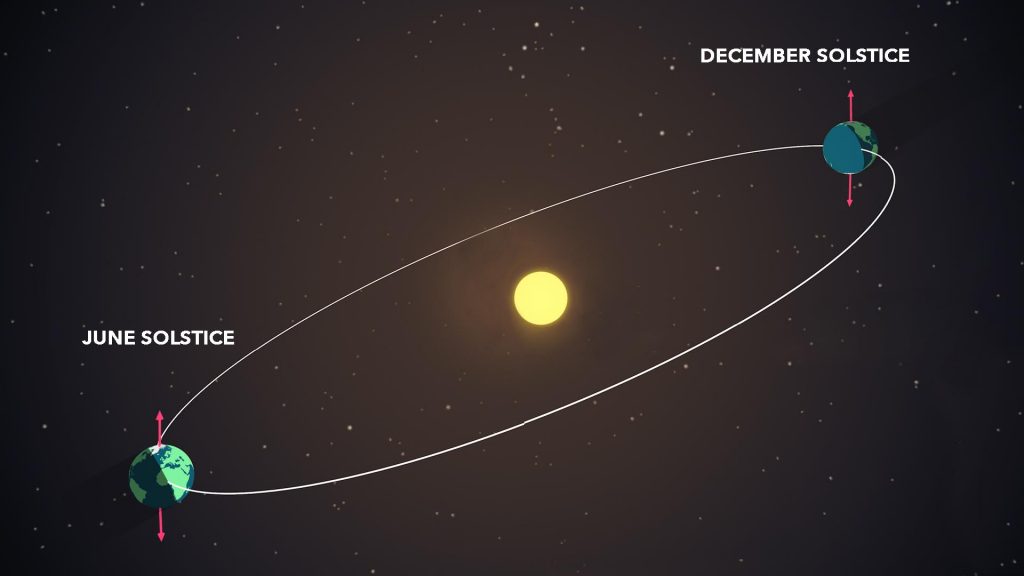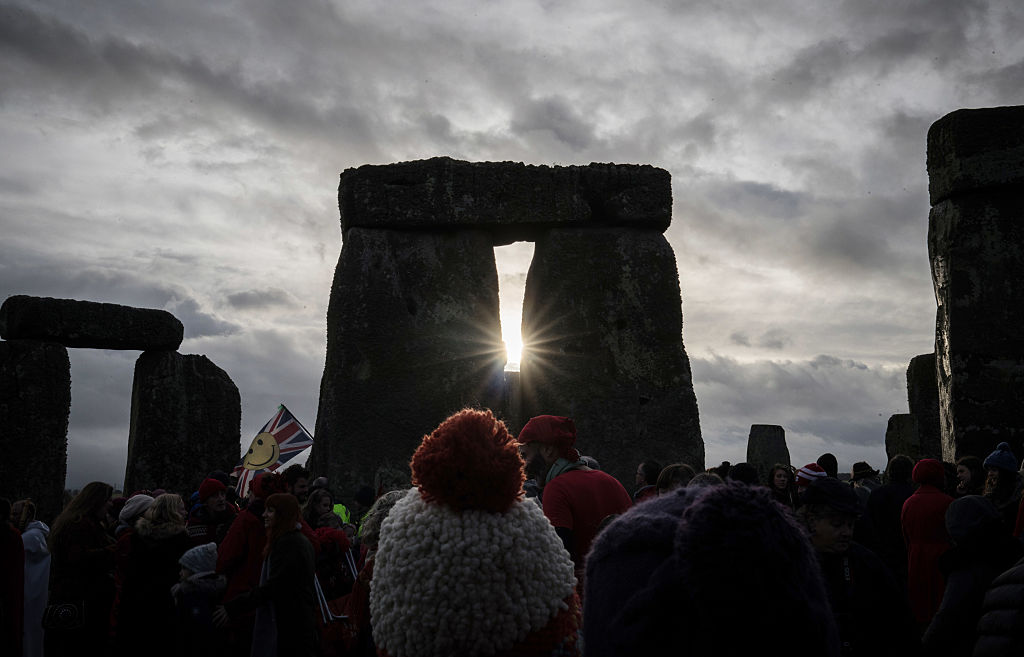Midwinter festivals have long been celebrated on the winter solstice each year by current and ancient cultures.
✓ In fact, many elements of the Christmas holiday were influenced by the Roman pagan midwinter festival Saturnalia, which celebrated the god of agriculture and time and fell near the winter solstice each year.
Winter solstice 2022 brings the longest night of the year to Northern Hemisphere

Winter is coming. Today, in fact!
Each December, the winter solstice marks the official start of astronomical winter in the Northern Hemisphere and the shortest day of the year. This year, the winter solstice occurs today, which means that from here on out, each day will be longer than the last for the next six months.
The winter solstice occurs on Wednesday (Dec. 21) at 4:48 p.m. EST (2148 GMT), according to Farmer's Almanac (opens in new tab). For those of us in the Northern Hemisphere, the days will gradually begin to get longer and the nights shorter going forward into winter. The sun will begin rising earlier and setting later, and will appear lower in the sky at local noon. In fact, if you can make it outside around noon local time today, take a look at your shadow; it should be the longest noontime shadow of the year due to the low angle of the sun.
Related: When is the Winter Solstice and what happens?
Seasons on Earth occur not because of our distance from the sun, but because of the planet's tilt. In fact, Earth's perihelion, or closest distance to the sun, comes in the middle of the Northern Hemisphere's winter. In 2023, it will fall on Jan. 4, according to In-The-Sky.org (opens in new tab).
The winter and summer solstices occur because Earth is tilted 23.5 degrees on its axis, and the moment of each solstice occurs when the axis is tilted in the direction of the sun. During the winter solstice, South Pole is tilted towards the sun, and during the summer solstice in June, the North Pole is tilted towards the sun.

During the vernal and autumnal equinoxes, the Earth's axis is perpendicular to the sun, not tilted towards it. (This tilt is why we experience seasons, and why the seasons are flipped in the Northern and Southern Hemispheres.)
During the winter solstice, the sun reaches the southernmost point in the sky from the perspective of Earth — at noon, the sun will appear directly overhead of the Tropic of Capricorn, at 23.5 degrees south.
At noon in the Northern Hemisphere, the sun will appear at its lowest point in the sky compared to where it is at noon throughout the rest of the year, which is why this marks the shortest day of 2022 in the Northern Hemisphere. In the Southern Hemisphere, however, it will be the longest day of 2022.
Midwinter festivals have long been celebrated on the winter solstice each year by current and ancient cultures. In fact, many elements of the Christmas holiday were influenced by the Roman pagan midwinter festival Saturnalia, which celebrated the god of agriculture and time and fell near the winter solstice each year.
According to History.com(opens in new tab), the winter solstice fell on Dec. 25 on the Julian calendar, which was used by the Ancient Romans; today we use the Gregorian calendar, which has the winter solstice fall on either Dec. 21 or Dec. 22.
Follow us on Twitter @Spacedotcom (opens in new tab) or on Facebook (opens in new tab).
Join our Space Forums to keep talking space on the latest missions, night sky and more! And if you have a news tip, correction or comment, let us know at: community@space.com.
RELATED CONTENT
A hard day's night
All about the 2022 winter solstice
Dec. 21 is the 2022 winter solstice, marking the day with the least amount of daylight of the year for the northern hemisphere and the most amount of daylight for the southern hemisphere. The exact time of the solstice is 4:48 pm ET, which is the time of sunset in the northern hemisphere. The solstice occurs when the sun is directly above the Tropic of Capricorn, its most southern point of the year, CNN explains. The further north you live, the less daylight you will have.
"The Earth experiences winter and summer solstices because the planet's orbit around the sun occurs at a tilt of approximately 23.5 degrees. In turn, the winter solstice occurs when the South Pole is tilted towards the sun, giving the southern hemisphere more daylight and the northern hemisphere less, Space.com explains. The opposite is true for the summer solstice.
The winter solstice is also the day for a number of traditions around the world. A number of places have midwinter festivals that take place on the solstice. Our ancestors also recognized the solstice with some fearing that the sun would disappear, reports The Wall Street Journal. Humans' understanding of the solstices was seen even thousands of years ago, like in the construction of Stonehenge, the structure of which aligns with both solstices.
Many cultures also believe the solstice to be spiritually significant with many holidays and celebrations occurring around the time, writes the Los Angeles Times. According to Ed Krupp, director of the Griffith Observatory in Los Angeles. "It gives people a signal about the cosmic order that surrounds them and seems to govern their lives, and also gives them an opportunity to anticipate what is coming next."
.jpg)
.jpg)
.jpg)
.jpg)
.jpg)
.jpg)
.png)

.jpg)
.jpg)


No comments:
Post a Comment